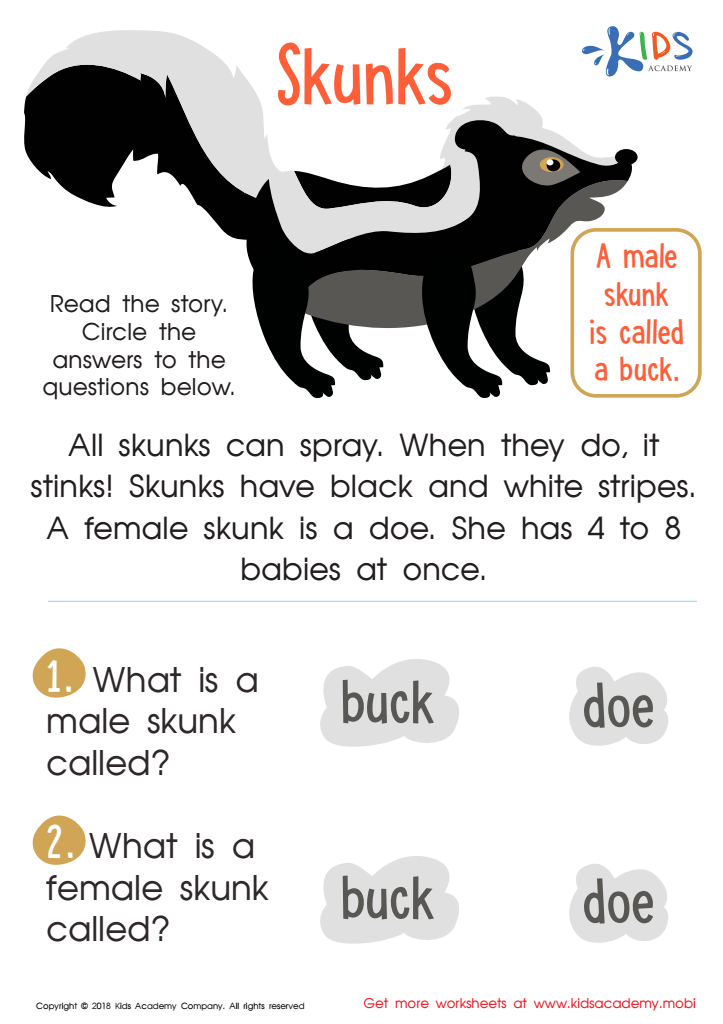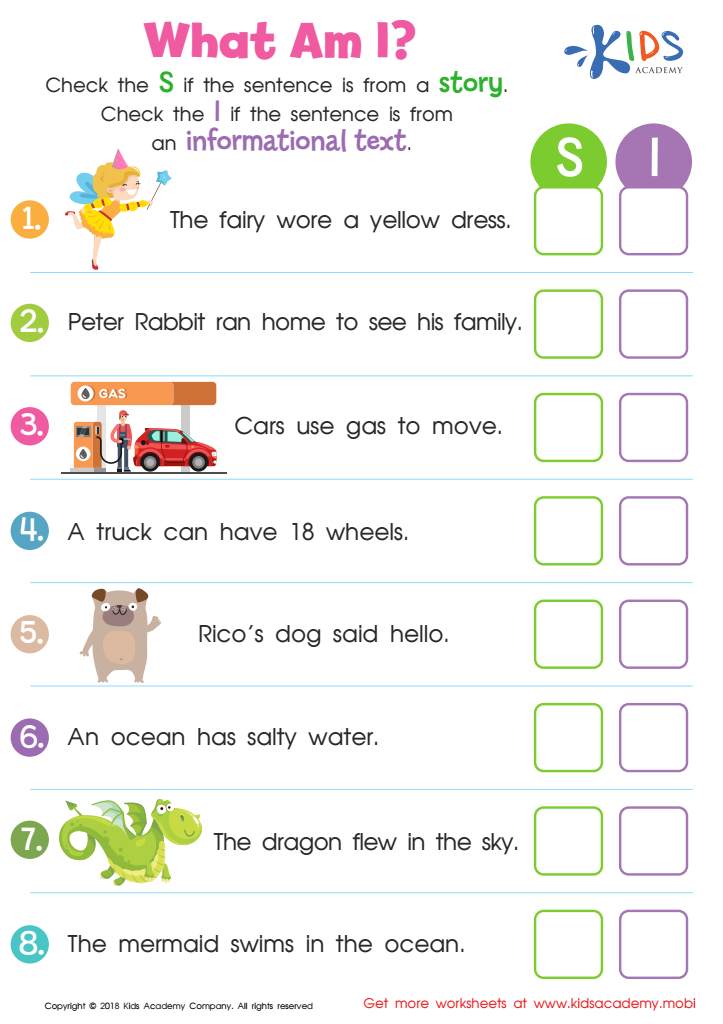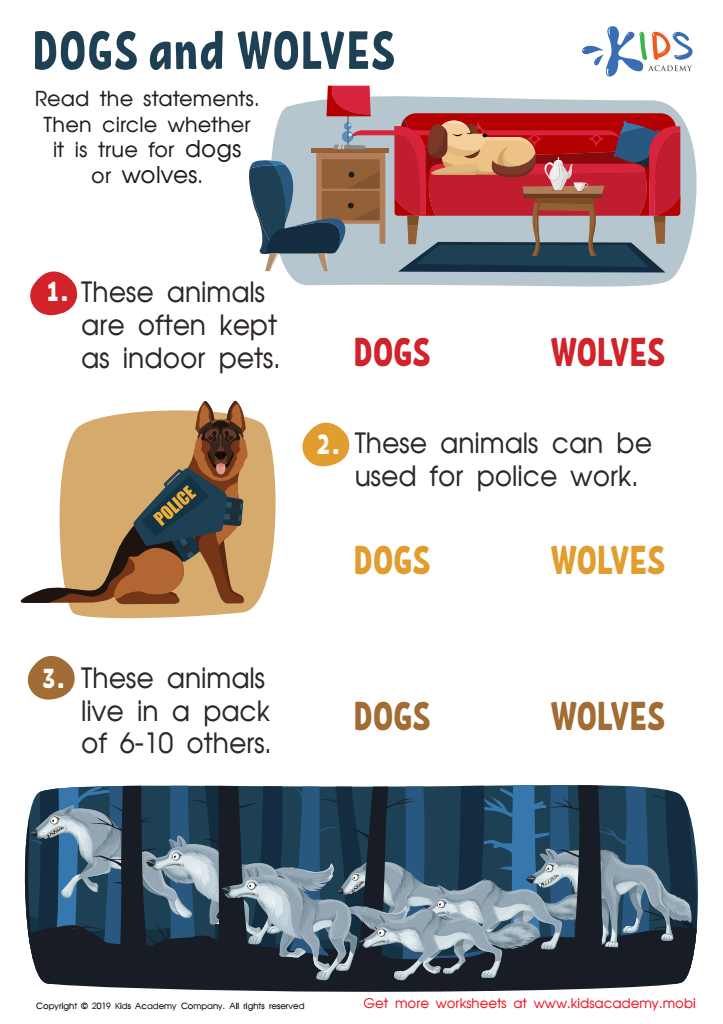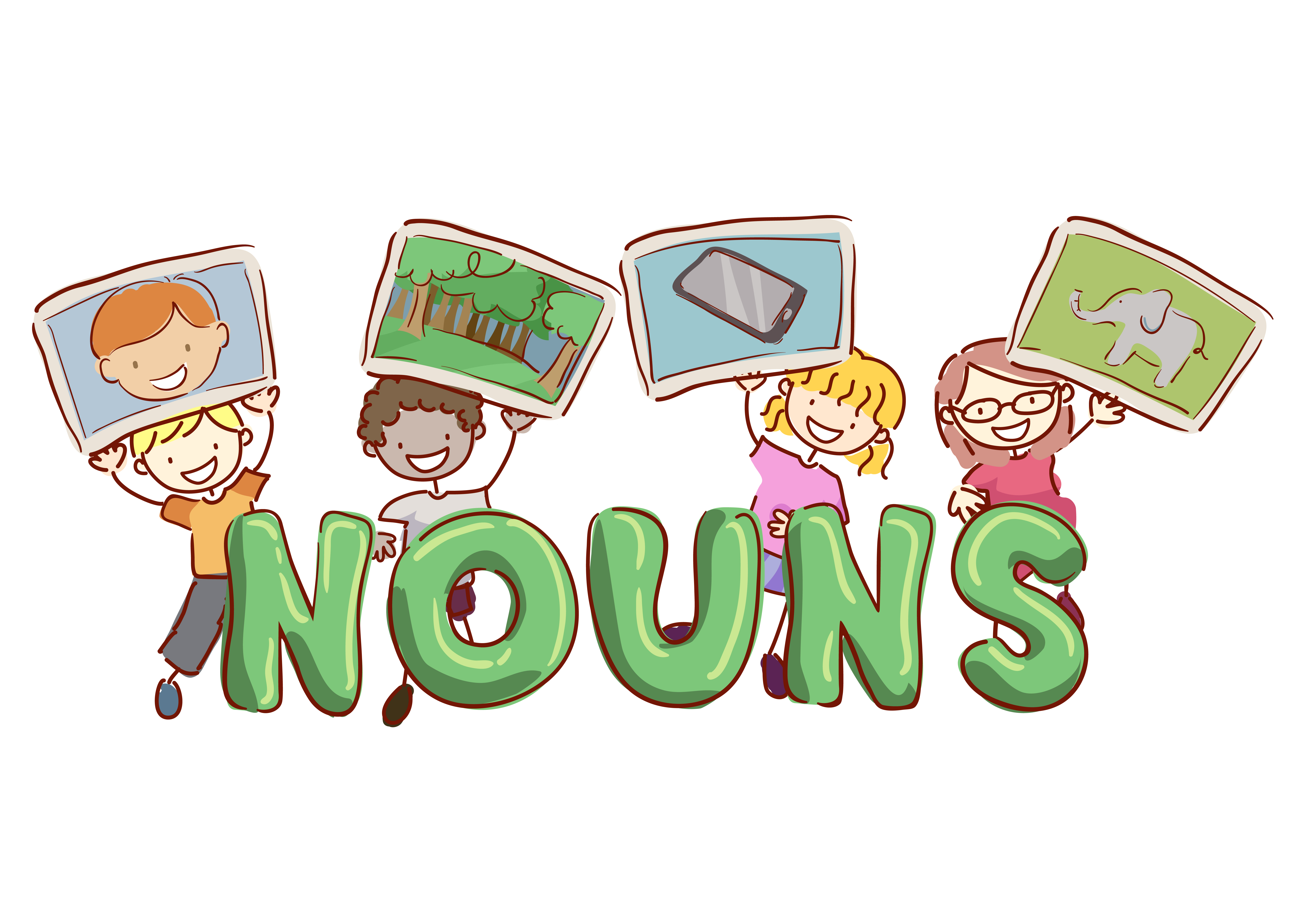Animal identification Reading Worksheets for Ages 5-7
5 filtered results
-
From - To
Introduce your young learners to the world of animals with our engaging Animal Identification Reading Worksheets, designed for ages 5-7! These fun-filled worksheets enhance reading skills by combining delightful animal facts with colorful images that captivate early readers. Each worksheet encourages kids to identify, read, and match pictures with animal names, boosting their vocabulary and reading confidence. Perfect for at-home practice or classroom activities, our printable worksheets make learning about animals exciting and educational. Simplify learning with our expertly designed resources and watch as your child's reading skills and animal knowledge flourish together!


Skunks Worksheet


Baby Pandas Worksheet


What Am I? Worksheet


Dogs and Wolves Worksheet
Animal identification reading for children aged 5-7 is essential for several reasons. Firstly, it fosters a deep connection with nature and enhances their understanding of biodiversity. When young learners recognize and learn about different animals, they develop an appreciation for the natural world and its various inhabitants. This grounding in knowledge about animals can stimulate curiosity and encourage lifelong learning about the environment and conservation.
Secondly, animal identification reading expands a child’s vocabulary and comprehension skills. Learning new animal names and their characteristics introduces kids to a broader lexicon and reinforces their reading abilities. These skills are foundational for academic success across various subjects.
Thirdly, teaching children to identify animals nurtures empathy and compassion. Children who are aware of the needs and challenges animals face are more likely to develop nurturing and responsible attitudes toward wildlife and pets.
Finally, animal identification activities can be highly engaging and fun. Interactive books, games, and activities about animals captivate young minds, making learning enjoyable and sparking a desire for further exploration. This type of reading can also serve as a foundation for critical thinking, prompting children to ask questions and learn more about animal behaviors, habitats, and conservation efforts.
Thus, incorporating animal identification reading into early education is an enriching way to develop not only academic skills but also empathy, curiosity, and a sense of stewardship for the planet.

 Assign to My Students
Assign to My Students





















